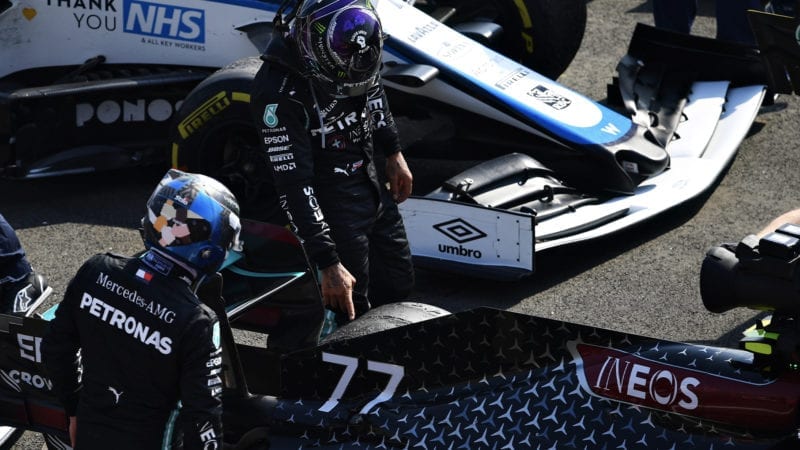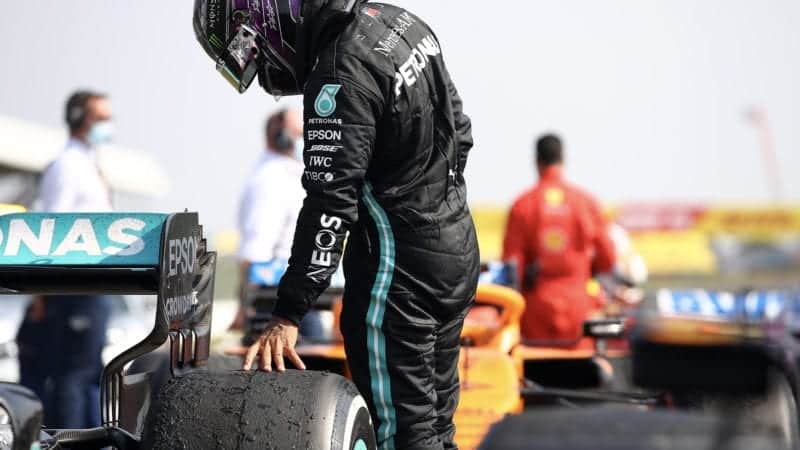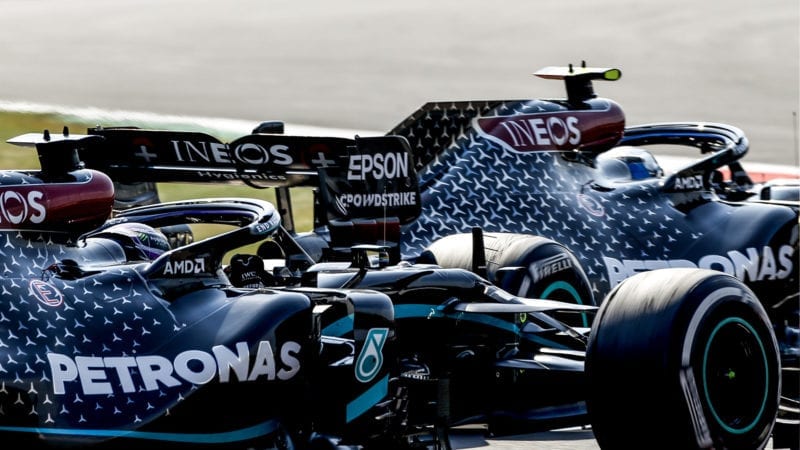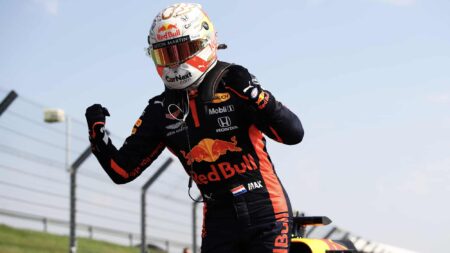Neither Pirelli nor Mercedes fully understands why this is so, but it could simply be that its downforce overwhelms the tyre’s core, creating more heat, offering less support for the tread which in turn overheats.
This medium here was last week’s soft. The soft here was way too soft and almost unused in the race. The track temperature was a few degrees higher than last week. That was enough to put Mercedes in trouble. More downforce will usually protect the surface of the tyre. But not if it’s overwhelming the core. While that would explain why the Merc was struggling in those hot Friday practice sessions in previous events and perhaps why it was the first to suffer the deflating front left last week at Silverstone, it doesn’t really explain why the problem was with the rears this time around.
Which leads us onto:
Protecting the left-front
Mercedes, like most teams, ran a smaller rear wing this week than last. With the big downforce created by the underbodies of these cars since 2017, Silverstone has become a lower wing level track. The more the underbodies produce, the more the wing levels can be trimmed back without it impacting too much on the lap time.
Reducing it slightly for the softer tyres of the 70th Anniversary race made sense. It would allow a lower angle to be run on the front in balancing the car, thereby imposing a little less strain on the left-front that proved so problematical last week. Furthermore, Pirelli had imposed higher minimum pressures this week, to protect the tyre’s structure. A very high 27psi front would reduce grip and thereby load.
Practice on Friday afternoon suggested Merc had reached a good compromise. Even with a track temperature of over 42-deg C, they did good long runs and were comfortably quickest over a single lap. But inspection of the long run medium tyres afterwards revealed a worrying fact. The wear of the front-left was extreme. The temperatures were being better controlled with these pressures and wing levels, but at the expense of wear rates that weren’t feasible for the race.
Mercedes would need to protect the left-front and for Saturday made a few subtle changes. In protecting the left-front, they increased the load on the rears. Which, it turns out, the rears couldn’t withstand. There was not, in other words, a window in which the Merc could balance out the loads between front and rear.

Last weekend the fronts; this weekend the rears. Mercedes struggling to find the right balance
Clive Mason/Formula 1 via Getty Images
There was no such problem on the Red Bull – or on any of the others, really. Only Nico Hülkenberg, who’d qualified the Racing Point a great third. He was forced into a late third stop after a rear blister suddenly worsened, dropping him from fifth to seventh behind team-mate Lance Stroll. But Charles Leclerc managed to one-stop his Ferrari in a beautiful drive that rewarded him with fourth place, in strong contrast to the troubled race of team-mate Sebastian Vettel who spun at the first corner, rejoined last and struggled home 12th.
Next we head to Barcelona where the forecast is scorching and the circuit layout demanding of the tyres, with a very delicate balance between front and rear tyre load. Sounds worrying for Mercedes, promising for Red Bull.




